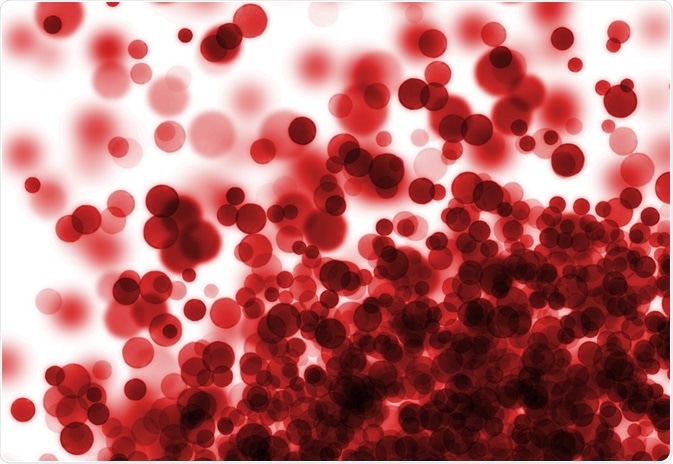Animals breathe in oxygen, following which it must be delivered to all the organs in the body. This process involves red blood cells and diffusion.
 Credit: eyeretina/Shuttertstock.com
Credit: eyeretina/Shuttertstock.com
Red blood cells
Red blood cells (RBCs) are a type of blood cell whose role is to transport oxygen from the lungs to the peripheral tissues of the body. Oxygen diffuses from the alveoli of the lungs into the RBCs, where it binds to hemoglobin. One molecule of hemoglobin can bind four molecules of oxygen (O2).
The partial pressure of oxygen determines the affinity of hemoglobin for oxygen. In the lungs, the partial pressure of oxygen is high, and hemoglobin has a high affinity for oxygen. In other tissues, the partial pressure of oxygen is lower, and hemoglobin releases its oxygen molecules.
This difference in affinities is important for oxygen to be delivered where it’s needed. Red blood cells have the shape of a flattened disk, generating a broad surface area for the diffusion of oxygen. Since their only purpose is carrying oxygen throughout the body, they lack many typical cell structures, including a nucleus.
Hemoglobin
Red blood cells are filled with hemoglobin. Hemoglobin is a globular protein comprised of four polypeptide chains with an iron-binding group called heme on each chain. The heme group has affinity for oxygen and when oxygen is present it is red, but when it lacks oxygen it is bluish. Hemoglobin also binds waste carbon dioxide for its return to the lungs, but this does not occur at its heme binding site.
Fetal hemoglobin
A developing fetus receives oxygen through the mother’s blood supply. Fetal hemoglobin has a higher affinity for oxygen than maternal blood, in order for oxygen to be successfully transferred from maternal red blood cells through the placenta to fetal red blood cells.
The reason that fetal hemoglobin has a greater affinity for oxygen is that it lacks an ability to interact with 2,3-bisphosphoglycerate (2,3-BPG), which in adult cells reduces the affinity for oxygen. The difference is due to a single amino acid change in the 2,3-BPG binding pocket.
Diffusion within RBCs
The rate at which RBCs can exchange oxygen and carbon dioxide is a measure of the fitness of the cells. In order to exchange gases, the cells undergo a number of steps including gas permeation across the cell membrane and hemoglobin binding. In the case of CO2, the molecules are converted to HCO3- ions and H+ ions.
The HCO3- ions are transported by the anion exchanger, AE1, and the H+ ions are buffered by hemoglobin. Cytoplasmic diffusion within the cell links all of these processes. The efficiency of gas exchange depends on protein-facilitated membrane transport, including transport of HCO3- ions by AE1 and membrane protein-assisted gas permeation.
The flattened shape of RBCs is believed to facilitate gas exchange by increasing the surface area to volume ratio and reducing the path-length for cytoplasmic diffusion, and thereby reducing delays introduced by cytoplasmic diffusion. However, these advantages have been found to be modest.
Further Reading